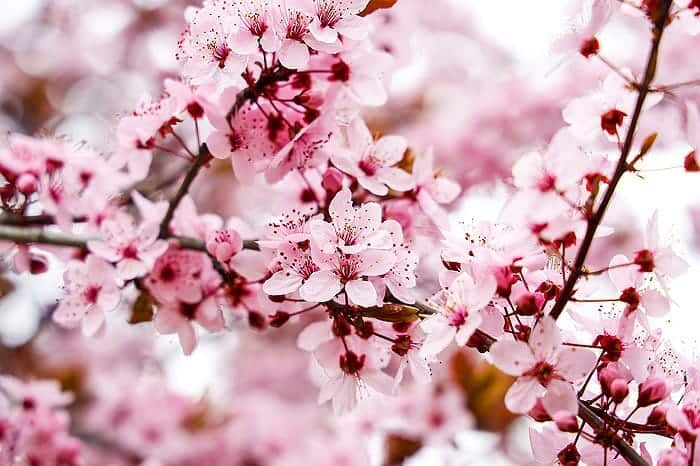
Fresh, sweet, and innocent. These are words that quickly come to mind when asked about an almond blossom. Although the almond blossom is native to regions of the Middle East[1], it is now a common sight worldwide, except for Antarctica.

Almond Blossoms are closely linked to peaches and are also known for the oil obtained from the fruits. Almond’s benefit didn’t start today. Humans have widely used almonds for a time that even dates back to Biblical times.
Usually, almond trees grow to around 9 meters tall. The leaves are finely toothed and appear only after the Almond Blossoms appear.

The color of the Almond Blossoms ranges from white to pale pink with a magenta center part. The stamens have several pollens and are located around a pistil that forms the fruit when pollinated.

The scent of almond blossoms is lovely and is reminiscent of the scent of jasmine and lily. However, the flower’s taste is slightly sweet, which isn’t so easy to recognize. In addition to the significant advantages that almond trees can bring with them, be it for the beautifying or flavoring effect; the Almond tree has a lot of meaning.

Many cultures see it as a sign of virginity; others see it as the “tree of life” because of its beautiful white flowers that bloom first between the trees.












